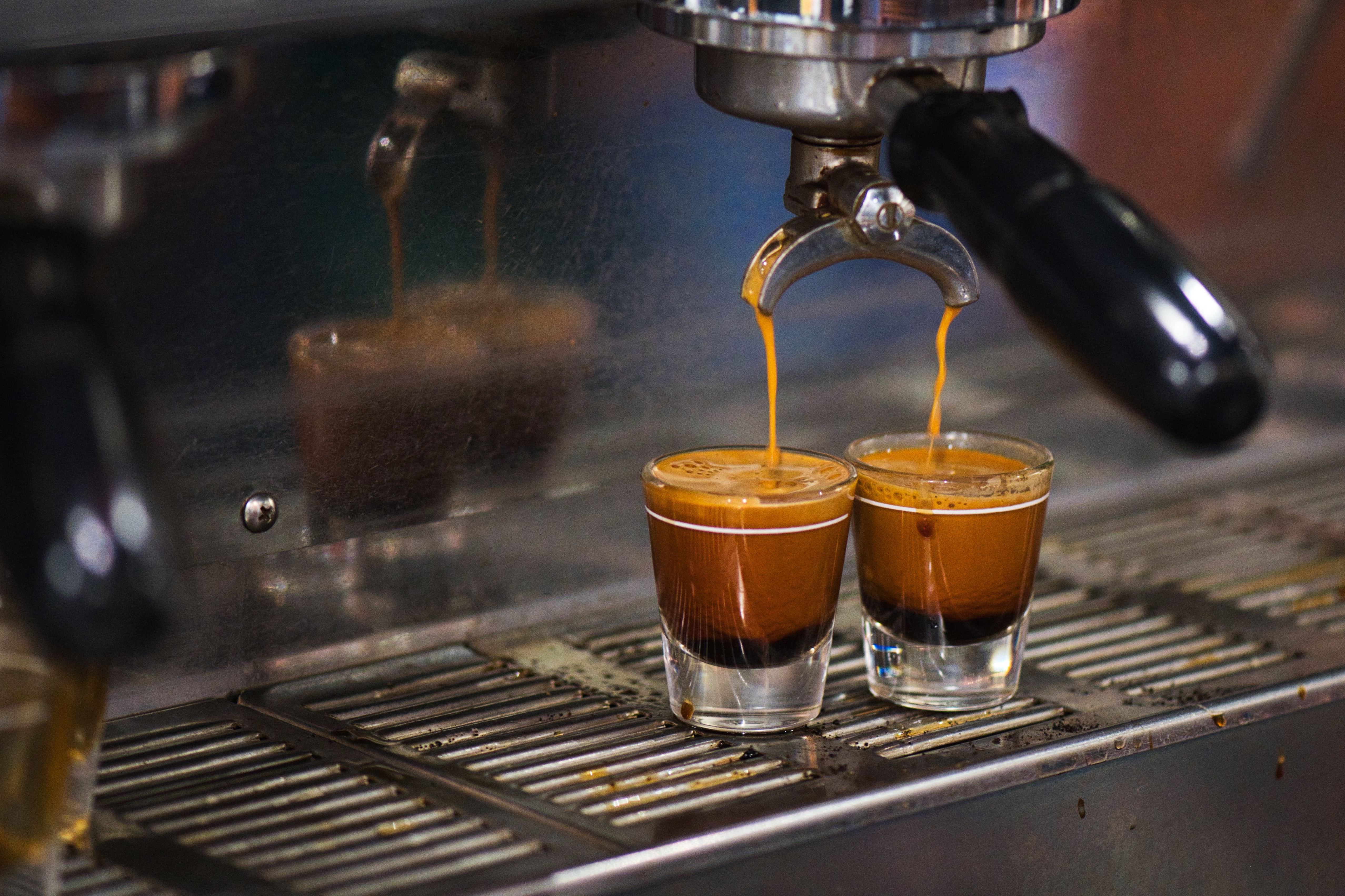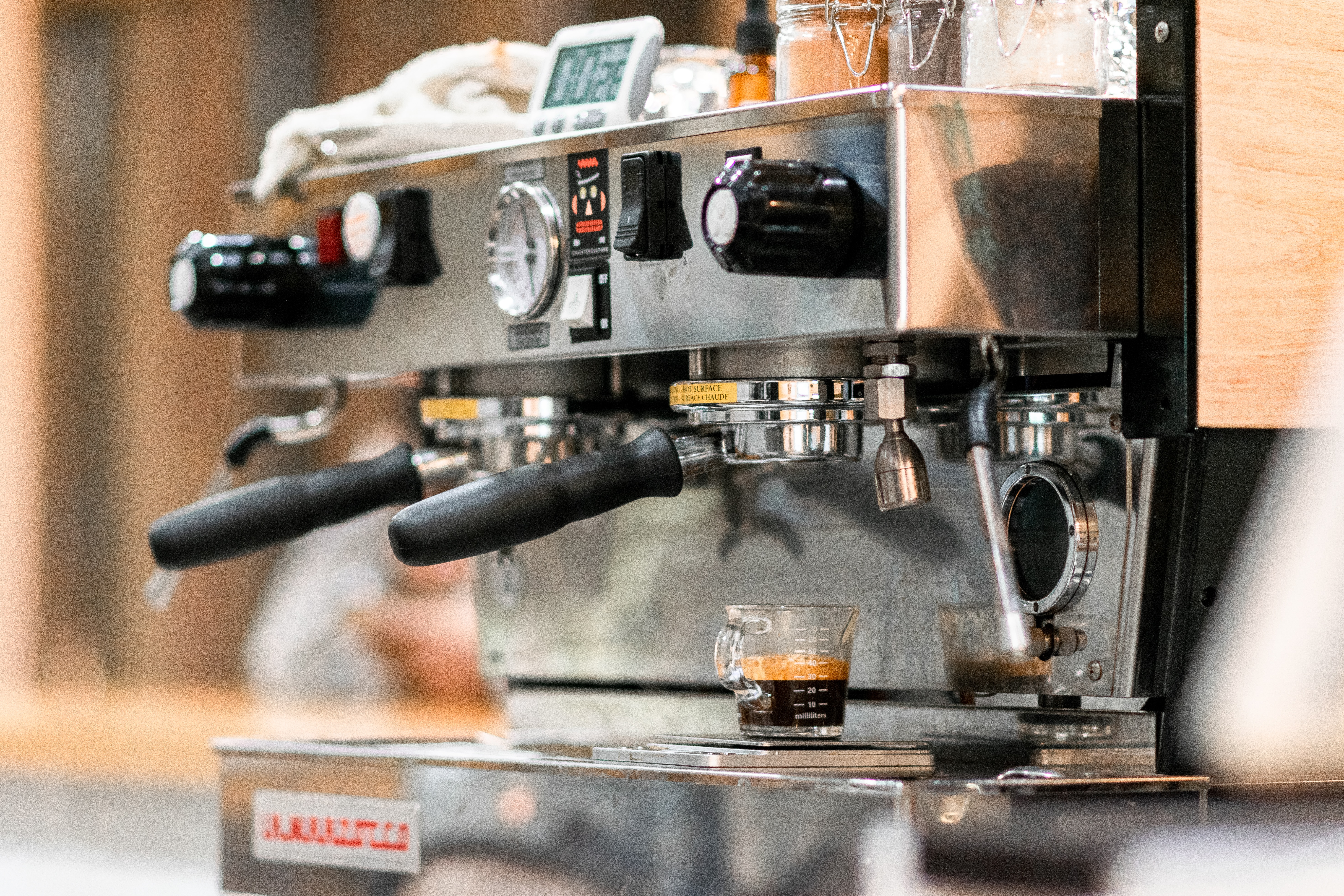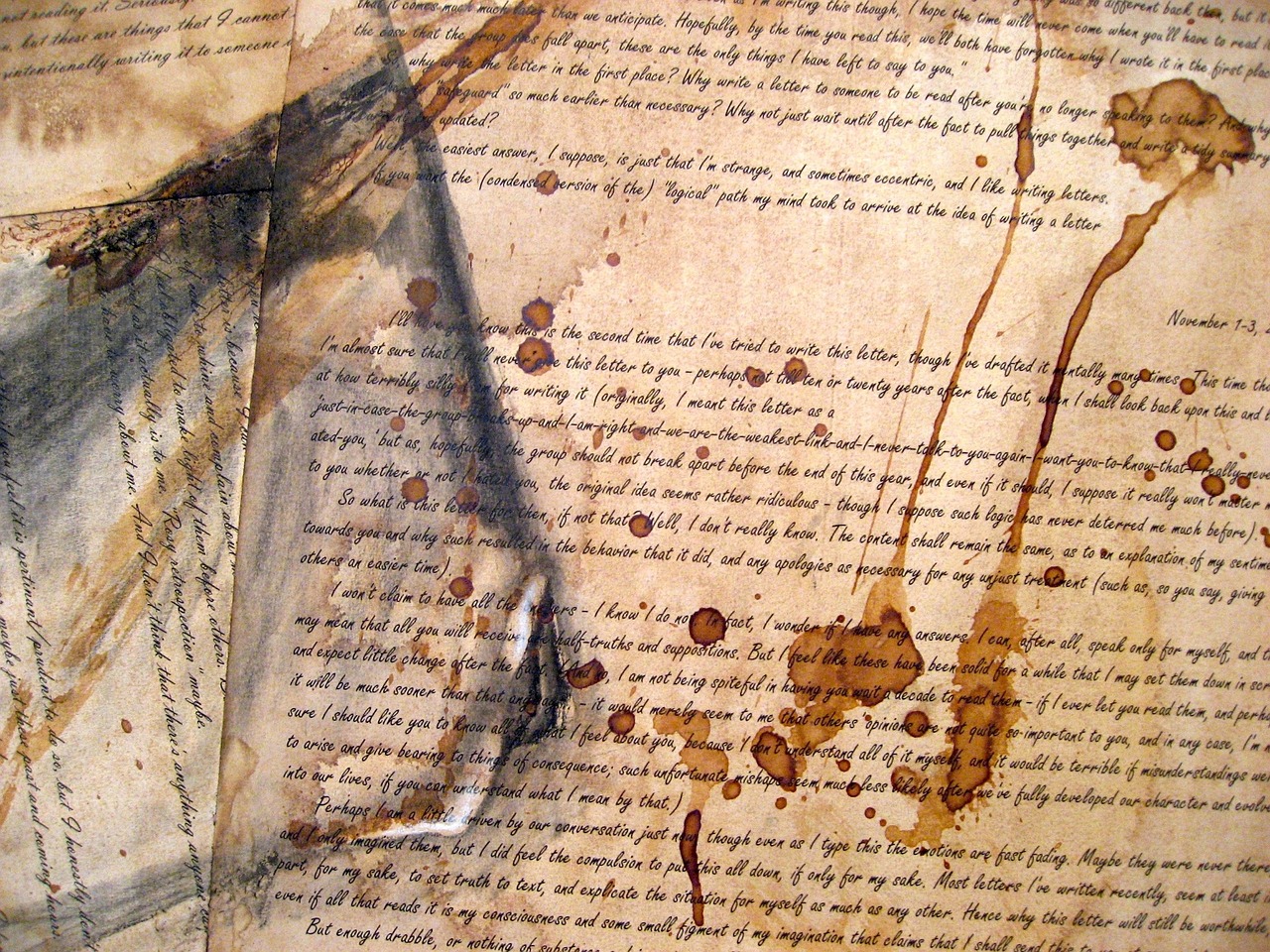Ever had an espresso? For the coffee lovers, this is the purest, most intense and one of the most delicious ways of enjoying coffee. To some people, it is a morning kick start while to others, this is a daily delicacy. If you look at an enthusiast taking espresso, you might wonder what just happened. It won’t take time as the coffee is not hot and is served in a small cup. However, the taste of the coffee going down your throat and your taste buds jumping over and about is the best thing ever. This is one reason most people wonder how they can make the same delicacy at home. This way, they can enjoy it any time they like.
What Is an Espresso?
Espresso is the most misunderstood coffee or coffee making means. Most people think that just from the name, it is a special bean, specially roasted, unique roast or it is simply very strong coffee. However, espresso is not so mystical, the only special thing about it might be the taste or the way it is prepared.
Espresso is a coffee drink prepare by its own unique method and that’s why some people think of it as special coffee. It is similar to poured over and French pressed coffee which are all different because of how they are made. Same idea, same beans but different gear and terrific taste.
Espresso is served in shots. A shot of espresso comes from finely ground coffee meeting hot water at high pressure. This is what happens in an espresso machine. No wonder they are not cheap. The high pressure reduces the extraction time as compared to brewed coffee, emulsifies oils in the beans and dissolves more coffee solids. This increases the flavor, thickens the coffee and gives the espresso a distinct layer of crema. A good shot of espresso is robust but balanced and never bitter.
Types of coffee makers
Like we mentioned above, espresso coffee is special because it is made using a different machine as compared to others like brewed coffee. Let’s take a look at some of the different types of coffee makers in a bid to understand coffee in a broad manner. They are so many but we will look at the most common making the best coffee:
-
Percolator
These were the most used coffee makers in the 19th century. The percolator is made with safety and convenience in mind. It is made using copper or aluminum and can make from 4 to 12 cups of coffee. It has two compartments, one filled with coarsely ground coffee and the other one with water. Some require a heat source while others have an inbuilt heating device. It works by boiling the water which then passes through the channels and drips back passing the coffee grounds and the process is repeated until the coffee is ready to serve.
-
Espresso machine
It might seem complicated and intimidating but once you understand its basics, it’s a simple machine to use. There are three types, the automatic, fully automatic and semi-automatic. The pump method is used in the semi-automatic machine while pressure method is used in the automatic machine.
The espresso machine works by forcing boiling water through fine ground coffee into a demitasse cup. It is also used to make a Cappuccino and Latte simply done by adding espresso in skimmed milk.
-
French press
French Press is the best machine to own if you need super strong coffee in the snap of a finger. It is also known as a coffee plunger and was used since 1958 in France.
The machine provides the simplest method to get a cup of coffee. You simply pour hot water into the press with coarse ground coffee at the bottom of course. Stir the combination for 3 minutes and push the plunger slowly down to filter the residue. The machine has metal filters that separate the beans from the brew but some sediments still manage to pass through. If this happens, you can use a paper towel for smooth coffee free from any sediments.
-
Moka pot
It is a stove top espresso maker and the most popular in the world. It combines the uniqueness of an espresso and percolator coffee. It has three chambers for water, grounded coffee and the finished product brew coffee.
The water is filled in the bottom chamber and the fine ground coffee in the middle. When heat is applied, the water travels through the coffee grounds to the final chamber that houses the espresso coffee ready for you to enjoy.
-
Drip coffee maker
It is the most common and simplest machine to use. It is best for those who take filter coffee. The machine contains two types of filter. The paper filter which requires to be changed after some time and the metal or plastic filter which has to be cleaned up.
The coffee making process begins when the hot water is poured over the finely grounded coffee placed in the filter. In the automatic machines, water is sprayed over the coffee grounds. The water passes the coffee grounds and drips to the pot collecting the finely brewed coffee.
-
Vacuum Coffee maker
Also known as the Vac pot, it is made of glass and provides a terrific cup of coffee but it costs you time and a lot of patience.
It works on a process of suction created by a vacuum. It has three parts, the upper chamber, lower chamber and the filter. It also has a tight seal that helps create vacuum inside. When you pour water in the lower chamber and the coffee beans in the filter, add a heat source which creates steam. The steam travels through the funnel direct to the upper chamber where it blends with the coffee.
After you remove the heat source, the lower filter cools quickly creating a vacuum which brings the brewed coffee to the lower chamber after filtering the sediments through the filter. The process of fantastic to watch and produces amazing coffee.
-
Thermal coffee maker
The thermal coffee maker’s specialty is maintaining the temperature of the brewed coffee for long without losing the aroma and the taste. This is the main difference between this Thermal coffee maker and the regular Coffee Maker. The coffee in this machine is directed to the Thermal carafe which maintains the temperature of the coffee.
Types of Coffee Beans
To make the best espresso, you also must have the best quality coffee. Let’s take a look at the different types of coffee beans.
There are four of these:
-
Arabica Beans
Arabica beans are the most popular in the world and they are considered to be of higher quality but pricier too. They have more acidity compared to other beans and they are grown mostly in the Latin America. They can also have different flavors depending on where they are grown from but that is a topic for another day.
-
Robusta beans
Robusta beans are the second most popular and second most used beans. They are darker in color and they are what people use for brewing at home purchased from grocery stores. Robusta beans contain twice the caffeine in Arabica beans. They look like little balls unlike the Arabica which is almond shaped. They are grown mostly in Africa and Indonesia and can survive in both high and low altitude. They have a deep flavor ideal for making espressos and holds well when you add cream and sugar.
-
Liberica Beans
Liberica beans grow only in the Philippines and they have a fruity floral aroma but produce coffee that has a smoky and woody flavor. They were first introduced in America in 1890 after a shortage of Arabica beans but shipping stopped when Philippines claimed independence.
-
Excels Beans
They are grown in the Southeast Asia and they are considered to be a genus of the Liberica beans. They aren’t used widely and compose 7% of the world’s coffee consumption. Their flavor is different from all the others being fruitier and tart.
Can You Reuse Coffee Grounds?
Is the daily use of coffee drilling a hole in your pocket and you want to cut those costs down? Well, maybe that’s why you came up with the idea of using your coffee grounds twice. But is it really worth it? Is it common?
Truth is, yes you can reuse coffee grounds but do you really want that taste in your mouth? Coffee is brewed for flavor and caffeine and the best of the best comes out at the first shot. The moment you make the first cup of coffee from the fresh grounds, that is the richest in flavor, soluble oils, caffeine and anything else in the coffee beans.
However, if you are a coffee enthusiast, reusing your coffee grounds might not be a good idea. The taste, the flavor all gone and you are left with coffee flavored water. If you choose this path, let me tell you the whole truth.
Reusing your coffee grounds to make another cup of coffee leaves you with a lighter and more bitter tasting coffee without most flavors. The first time took almost everything away from the grounds.
You can however reuse the coffee grounds for alternative uses just not for brewing coffee again.
Do Coffee Grounds Go Bad?
Coffee is roasted beans and like other beans, coffee can easily go bad. The roasting process removes most of the contaminants in coffee and the moisture level of the coffee goes low. You won’t have to worry about bacteria and mold growing on the coffee grounds unless you introduce too much moisture when the grounds are in storage.
Coffee is a food based product and can go bad if not stored properly and under the right conditions. When purchasing coffee beans or grounds, they all come with an expiry date so you should keep it in check.
To extend the life of your coffee grounds, store them cooled in a dry place away from moisture. When sealed the grounds can last for up to one year but when unsealed and on the shelf, the grounds can last for a maximum of five months. It is however important to know when coffee has gone bad to avoid drinking.
How Long Does Coffee Last?
Like mentioned above, how long the coffee lasts depend on:
- Is the coffee sealed or open?
- Coffee beans or coffee grounds?
When the grounds are sealed, they can last for 1-2 years when cooled and 3-5 months on the shelf. For the coffee beans, they can last for 2-3 years when sealed and cooled but 6-9 months on the shelf.
For the unsealed grounds, the life expectancy falls dramatically. When cooled, the grounds can go for 3-5 months same when they are on the shelf. For the beans, they can go for 2 years unsealed and cooled while they go for 6 months on the shelf unsealed.
To make the best espresso coffee, the best thing to start with is the right machine and preparation process. Know the basics of operating the espresso machine and how to prepare the coffee beans for brewing.
Second, make sure you use the best quality coffee grounds. The best quality finely grounded produces the best espresso which is what is offered in most coffee shops. Arabica coffee beans is the best quality for an espresso.
You can also make an espresso at home without the espresso machine but you must have another great coffee machine. Espresso machines can be insanely expensive (with some costing more than my house) but always go for the standard priced machine or the one that fits your budget. At the end of the day, an espresso machine will make an espresso and not French coffee. If you want to take an espresso every day, going to the coffee shop might prove to be uneconomical while you could have made the same at home.
Never reuse coffee grounds from the espresso to brew coffee again. The best shot comes from freshly grounded coffee and the first shot is always the best.
Go ahead and gather your coffee grounds, espresso machine and don’t forget this guide and make this famous rejuvenating drink. Enjoy



